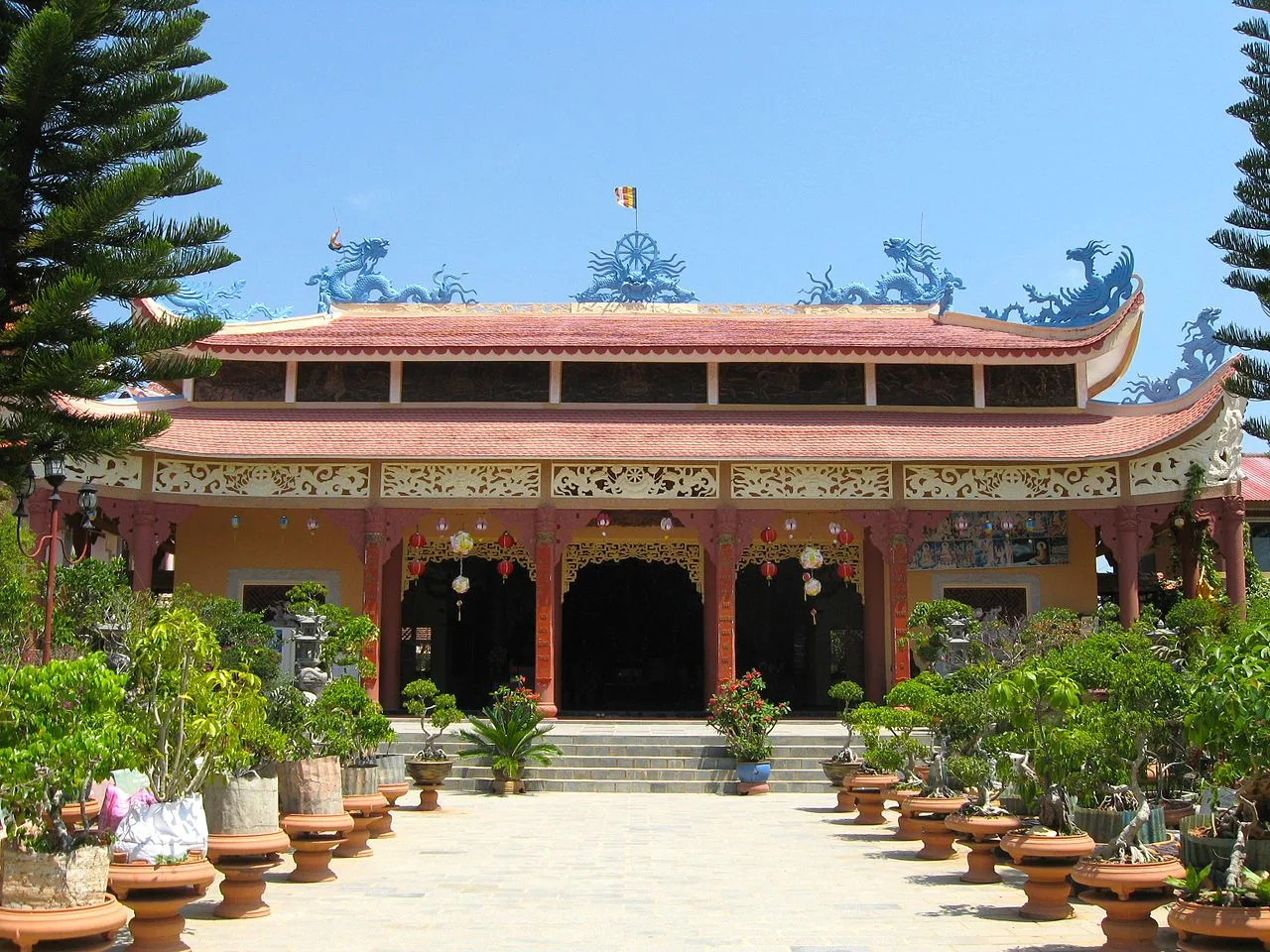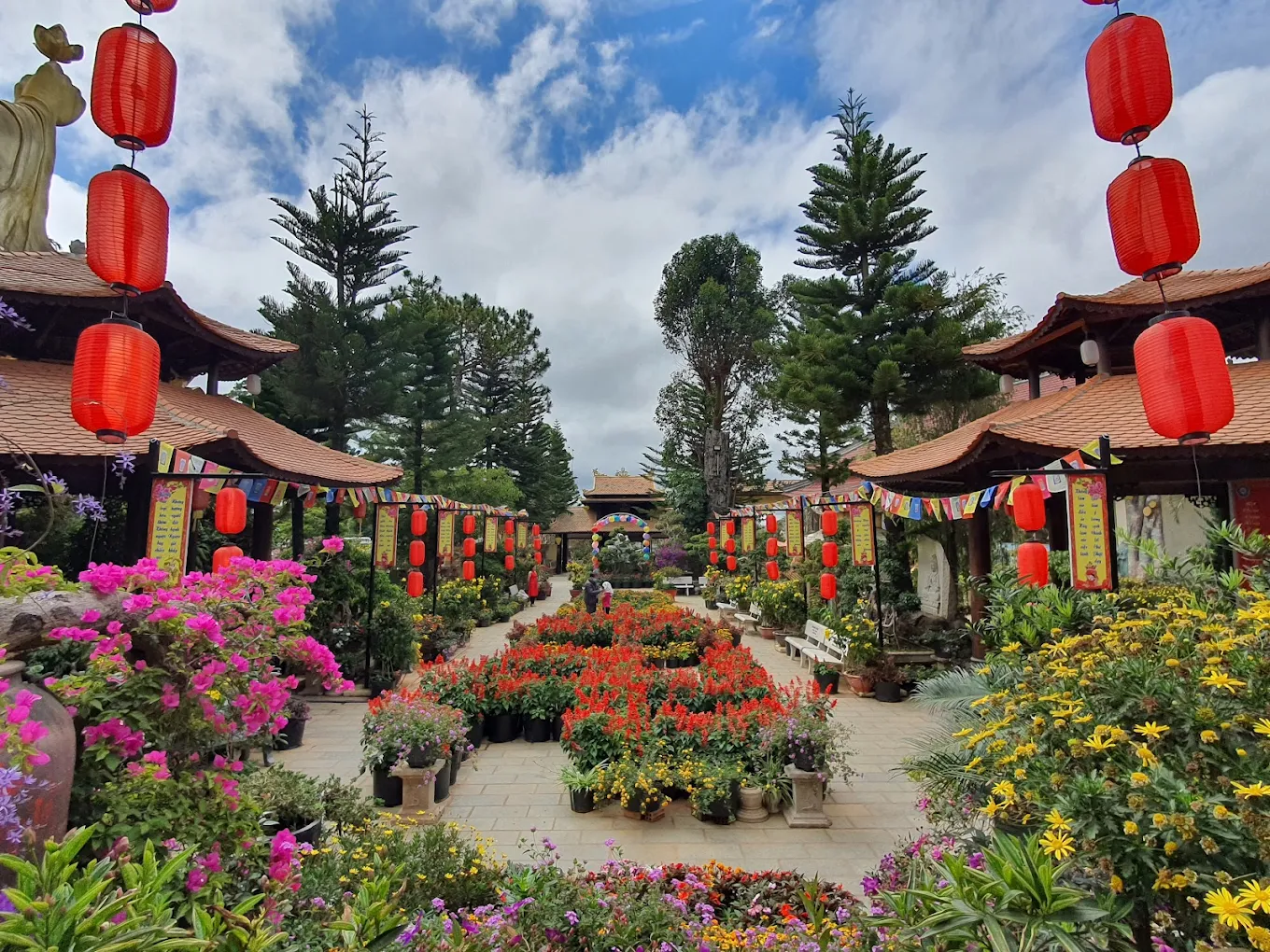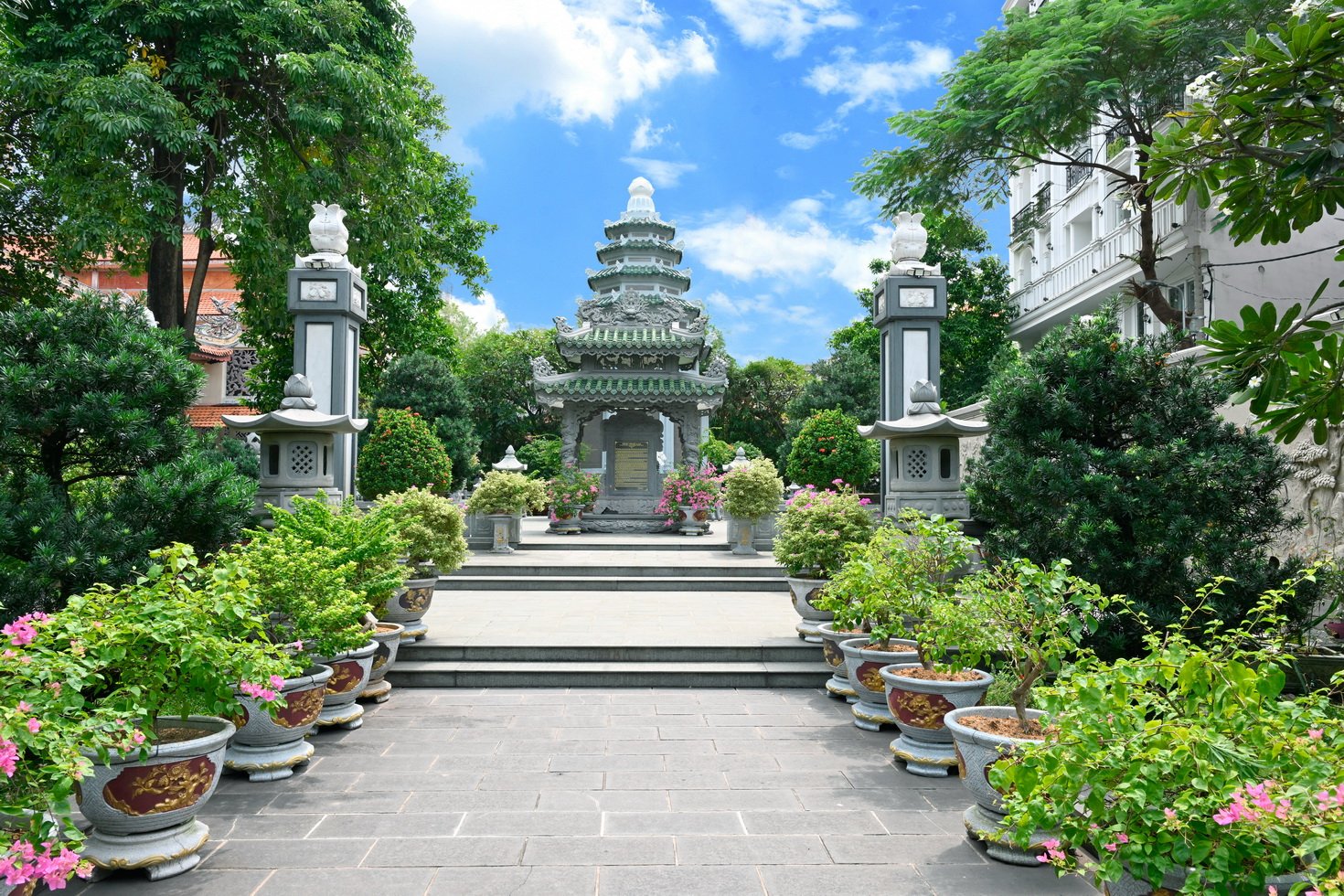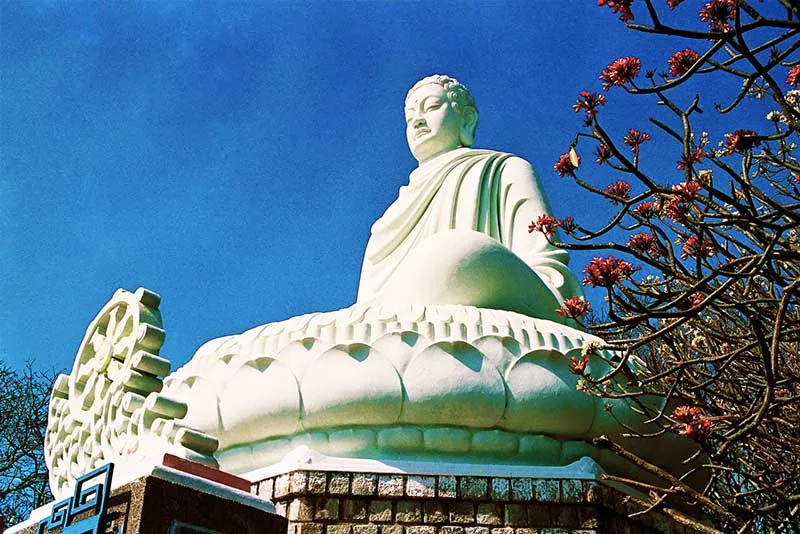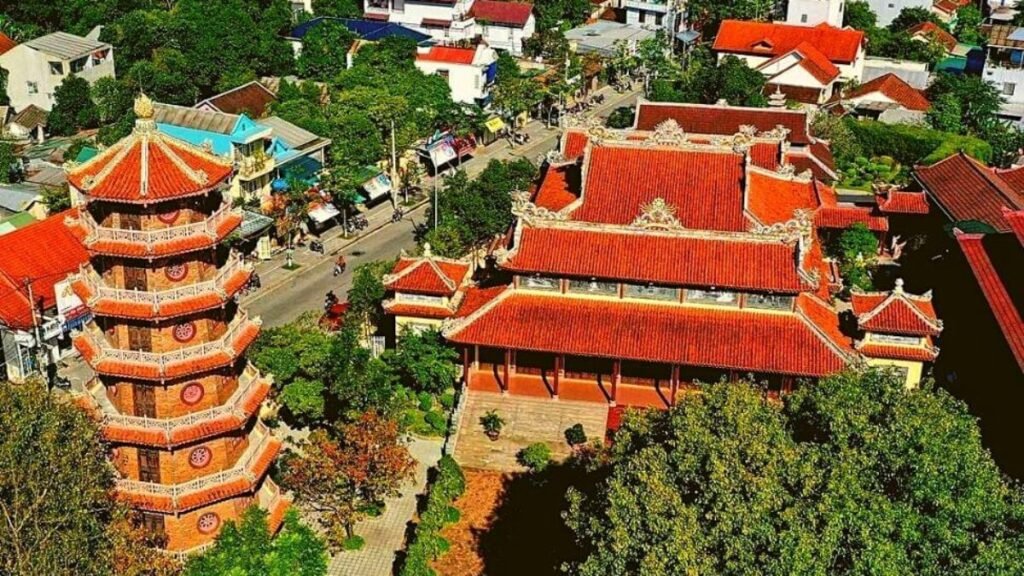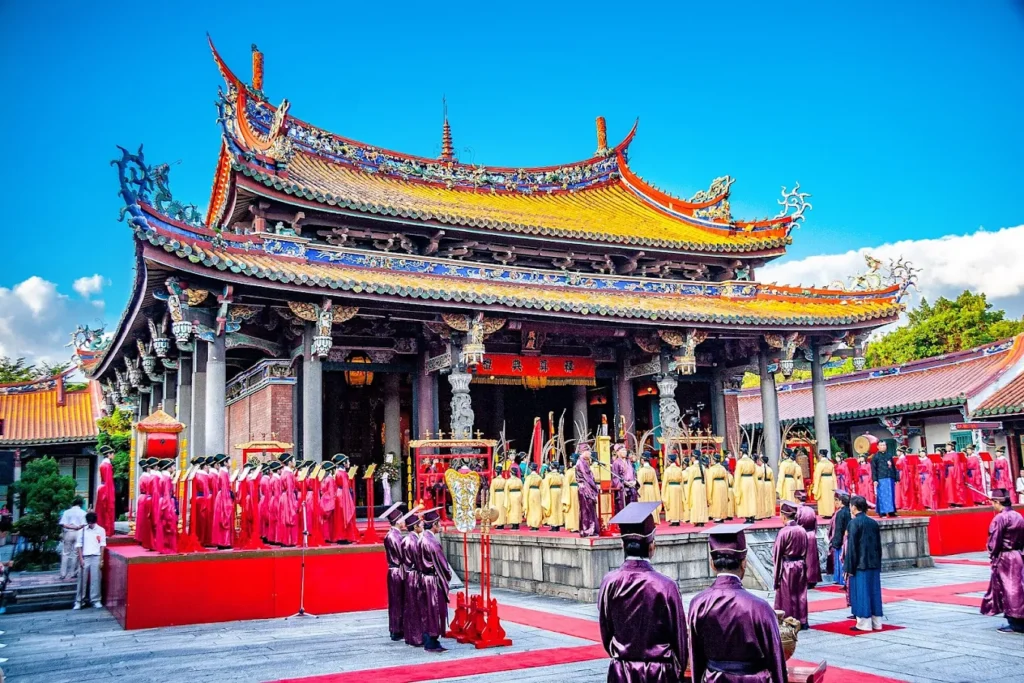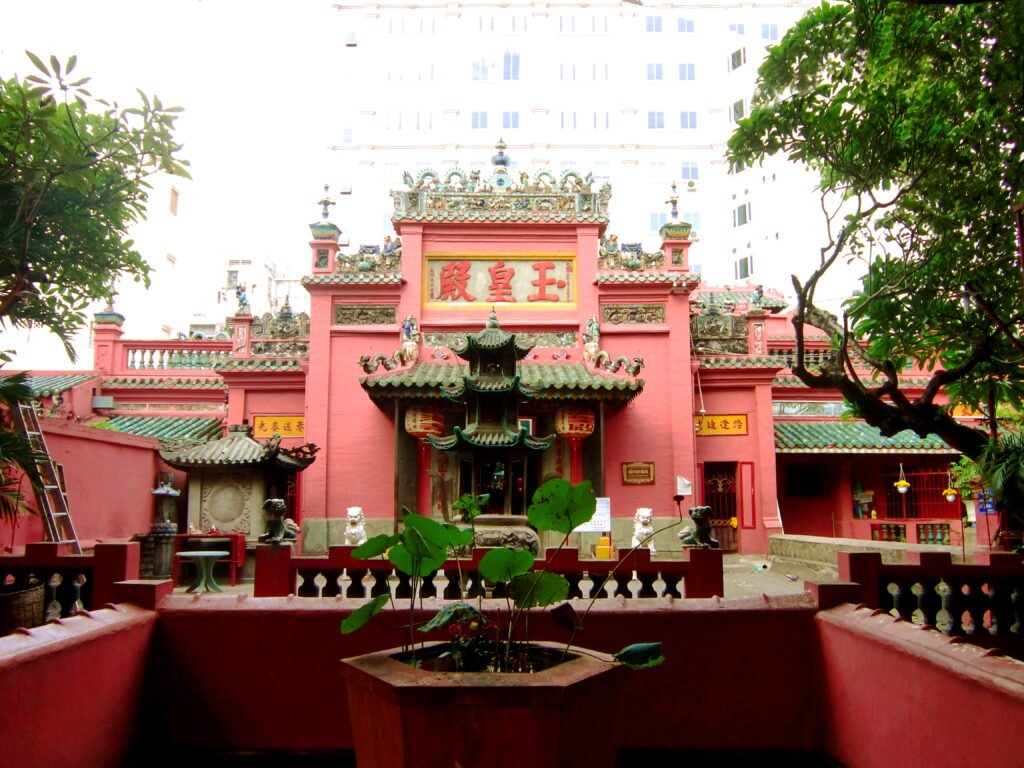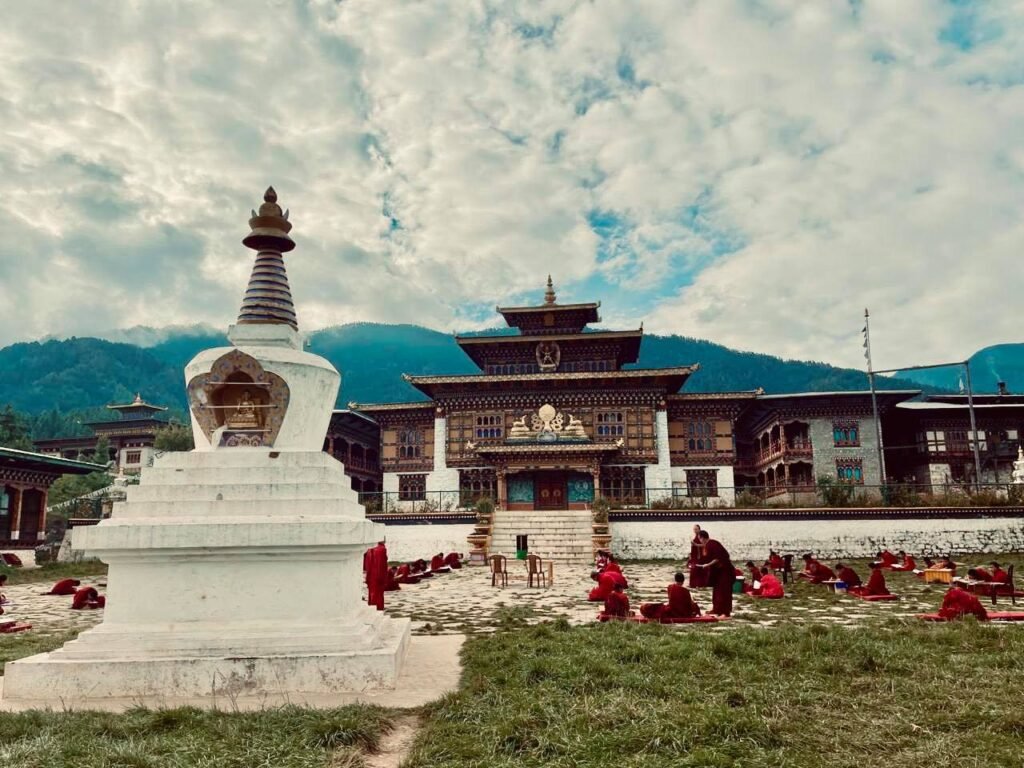Van Hanh Monastery: Saigon’s Sanctuary of Buddhist Scholarship
Nestled along Nguyễn Kiệm Street in Phú Nhuận District, Van Hanh Monastery, transformed in 1976 by Hòa thượng Thích Minh Châu, radiates sacred grandeur with its red-tiled roofs and serene main hall [chánh điện]. This Mahayana monastery [thiền viện], rooted in the Northern School [Bắc Tông], serves as a hub for the Buddhist Research Institute and Vietnam Buddhist Academy. Its Great Compassion Retreat [Đạo tràng Đại Bi] chants resonate weekly, while charity drives uplift the community. Led by Thượng tọa Thích Tâm Minh, the Van Hanh Monastery listing draws scholars, devotees, and travelers to Ho Chi Minh City’s Buddhist soul.
Citadel of Wisdom: Overview and Significance
Van Hanh Monastery, a Mahayana beacon in Phú Nhuận, blends scholarly pursuit with spiritual devotion, enriching the Van Hanh Monastery listing. Its historical legacy, cultural vibrancy, and community outreach make it a cornerstone of Ho Chi Minh City’s Buddhist landscape.
Historical Roots and Legacy
Transformed in 1976 by Thích Minh Châu from a pre-1975 applied sciences faculty of Vạn Hạnh University, the monastery became a center for Buddhist study. Its main hall, renovated from 2001 to 2004, reflects Huế-style architecture. The Van Hanh Monastery listing highlights its role under Thích Tâm Minh, appointed trụ trì in 2022, fostering research and devotion.
- Key Milestones:
- 1976: Transformed into a monastery by Thích Minh Châu.
- 2001–2004: Main hall renovated, Huế-style.
- 2022: Thích Tâm Minh appointed trụ trì.
Cultural and Spiritual Significance
Rooted in Mahayana’s Northern School [Bắc Tông], a Vietnamese branch influenced by Chinese Buddhism, the monastery emphasizes the Bodhisattva ideal through meditation and sutra chanting. As home to the Buddhist Research Institute, it translates Pali and Chinese scriptures, enhancing the Van Hanh Monastery listing’s role in Ho Chi Minh City’s spiritual tourism, alongside Jade Emperor Pagoda.
- Cultural Roles:
- Preserves Northern School practices through retreats.
- Boosts Saigon’s spiritual tourism with scholarship.
- Translates Buddhist scriptures for global access.
Community and Global Connections
The monastery serves Phú Nhuận with charity drives, like scholarships and meals, uniting locals. Its 2024 Vesak festival drew thousands, fostering community bonds. The Van Hanh Monastery listing attracts international scholars and pilgrims, supported by Vietnam’s tourism, connecting local devotion with global Buddhist networks.
- Community Impact:
- Provides scholarships and free meals.
- Hosts festivals, uniting Buddhists.
- Draws global scholars, promoting Mahayana heritage.
As chants echo and lotus ponds shimmer, the monastery’s lasting heritage invites exploration of its architectural serenity, a highlight of the Van Hanh Monastery listing.
Sanctuary of Scholarship: Architectural and Spiritual Features
Van Hanh Monastery’s Huế-inspired design, renovated in 2004, blends traditional aesthetics with scholarly function. Its serene setting and sacred relics enhance its appeal, making it a cornerstone of the Van Hanh Monastery architecture.
Iconic Design and Structures
The monastery’s Three Gates [Tam Quan], built in 1990 with Huế-style red tiles, welcome visitors. The main hall, renovated by architect Phan Trường Sơn, houses a serene Buddha statue. A two-story patriarch hall [nhà Tổ] and lotus-filled courtyard anchor the Van Hanh Monastery architecture, blending devotion with study.
- Design Highlights:
- Huế-style Three Gates, built 1990.
- Renovated main hall, completed 2004.
- Lotus-filled courtyard, serene setting.
Sacred Statues and Relics
The main hall houses a statue of Shakyamuni Buddha [Phật Thích Ca], crafted in white ivory, seated on a lotus throne. The patriarch hall honors Thích Tịnh Khiết, first Tăng thống of Vietnam’s Unified Buddhist Church, with a revered portrait. These relics amplify the spiritual potency of the Van Hanh Monastery listing.
- Statue Details:
- Shakyamuni Buddha: White ivory, ~2 meters.
- Thích Tịnh Khiết: Portrait in patriarch hall.
- Prayer wheels, enhancing devotion.
Artistry and Environmental Harmony
Vietnamese artisans crafted frescoes and carvings, using natural pigments for lotus and dragon motifs, rooted in Northern School aesthetics. The monastery’s one-hectare campus, with minimal environmental impact, aligns with Vietnam’s eco-conscious ethos, enhancing the Van Hanh Monastery architecture with lush greenery.
- Artistic Features:
- Lotus and dragon frescoes, painted naturally.
- Carved wooden beams with Buddhist symbols.
- Eco-friendly campus design.
The monastery’s serene artistry and scholarly mission invite exploration of its rituals, a vital part of the Van Hanh Monastery listing.
Rhythms of Devotion: Rituals and Practices
Van Hanh Monastery pulses with Mahayana rituals, blending chanting, retreats, and charity. Its vibrant practices and festivals draw devotees, enriching the Van Hanh Monastery listing.
Daily and Unique Rituals
Monks lead the Great Compassion Retreat [Đạo tràng Đại Bi], chanting the Great Compassion Mantra in Sanskrit, fostering universal compassion. Weekly Sunday Dharma talks [giảng pháp], led by Thích Tâm Minh, offer wisdom, a unique practice. Charity drives, like scholarships, embody Mahayana compassion, central to the Van Hanh Monastery listing.
- Daily Practices:
- Great Compassion Mantra chanting, ~1 hour.
- Sunday Dharma talks, ~1 hour.
- Charity drives for scholarships and meals.
Festival Traditions
The monastery hosts Vesak [Phật Đản] in April/May and Vu Lan [Ullambana] in August, celebrating the Buddha’s life and filial piety with lamp lightings and prayers. These festivals, drawing thousands, unite Phú Nhuận’s Buddhists, enhancing the Van Hanh Monastery listing’s communal vibrancy.
- Festival Highlights:
- Vesak: Lamp lightings and prayers, April/May.
- Vu Lan: Filial piety rituals, August.
- Communal gatherings, fostering unity.
Community and Visitor Engagement
Led by Thích Tâm Minh, the monastery engages Phú Nhuận with retreats and charity, serving diverse residents. Visitors join chanting or Dharma talks, guided by monks, enriching the Van Hanh Monastery listing. Community outreach strengthens ties, connecting local devotion with global pilgrims.
- Engagement Activities:
- Guided chanting sessions, ~20 minutes.
- Sunday Dharma talks, open to visitors.
- Community retreats and charity events.
The monastery’s vibrant rituals and scholarly mission guide visitors to practical insights, ensuring a seamless journey to its sacred grounds.
Journey to Van Hanh: Visitor Information
Van Hanh Monastery, a serene retreat in Phú Nhuận, offers easy access for those exploring the Van Hanh Monastery listing. Its urban logistics and nearby attractions make it a must-visit in Ho Chi Minh City.
Navigating the Monastery
Located at 750 Nguyễn Kiệm, the monastery is a short drive from District 1 via Nguyễn Đình Chiểu Street. A walk along nearby canals offers a scenic approach. The courtyard, with lotus ponds, is a brief walk from the entrance, with parking nearby for the Van Hanh Monastery listing.
- Navigation Tips:
- Drive via Nguyễn Đình Chiểu to Nguyễn Kiệm.
- Walk along nearby canals for scenic views.
- Expect a short walk from parking.
Practical Details and Etiquette
Open daily from 6 AM to 6 PM, the monastery welcomes visitors without an entry fee, though donations support charity. Dress modestly (shoulders and knees covered), remove shoes in the main hall, and avoid photography inside. Silence phones to respect meditation spaces. The address is 750 Nguyễn Kiệm, Phường 4, Phú Nhuận District, Ho Chi Minh City, vital for the Van Hanh Monastery listing.
- Logistics:
- Address: 750 Nguyễn Kiệm, Phường 4, Phú Nhuận District, Ho Chi Minh City.
- Hours: 6 AM–6 PM, daily.
- Transport: Taxi or canal-side walk.
- Etiquette: No indoor photography, dress modestly.
Immersive Experiences and Surroundings
Visitors can light incense for blessings or join Sunday Dharma talks, guided by monks, for the Van Hanh Monastery listing experience. Charity events, like meal distribution, are open to all. Nearby, Jade Emperor Pagoda and Tan Dinh Market offer cultural depth, while canals invite strolls.
- Immersive Tips:
- Join Dharma talks for spiritual insights.
- Participate in charity events.
- Visit Jade Emperor Pagoda and Tan Dinh Market.
The monastery’s serene setting and vibrant rituals invite exploration of its philosophical depth, a highlight of the Van Hanh Monastery listing.
Wisdom of Van Hanh: Cultural and Spiritual Insights
Van Hanh Monastery offers profound Mahayana insights, its statues and scholarship symbolizing wisdom and compassion. Its role in Phú Nhuận’s community enriches the Van Hanh Monastery listing.
Philosophical Foundations
Mahayana’s Northern School [Bắc Tông], guiding the monastery, is a Vietnamese branch influenced by Chinese Buddhism, emphasizing the Bodhisattva ideal—compassionate service for all beings’ enlightenment—through Zen meditation and sutra chanting. The Great Compassion Mantra, chanted in Sanskrit, fosters universal compassion, while Dharma talks cultivate wisdom. These practices, shared via monk-led talks, deepen the Van Hanh Monastery listing’s spiritual value.
- Key Concepts:
- Bodhisattva Ideal: Compassion for all beings.
- Great Compassion: Chanting for universal healing.
Cultural and Symbolic Depth
The Shakyamuni Buddha statue and Thích Tịnh Khiết portrait symbolize wisdom and lineage, inspiring devotees. Lotus motifs and prayer wheels reflect Northern School aesthetics, shared during tours. The Buddhist Research Institute embodies intellectual devotion, linking the Van Hanh Monastery listing to Saigon’s Buddhist soul.
- Symbolic Elements:
- Shakyamuni Buddha: Wisdom and enlightenment.
- Research Institute: Scholarly devotion.
Community and Environmental Resilience
The monastery unites Phú Nhuận through retreats and charity, serving the community. Its one-hectare campus, with lush greenery, aligns with Vietnam’s eco-conscious ethos. Community outreach ensures Buddhist values thrive, enriching the Van Hanh Monastery listing.
- Resilience Efforts:
- Charity drives, serving the poor.
- Sustainable campus design.
The monastery’s wisdom and compassion invite visitors to experience its sacred power, a cornerstone of the Van Hanh Monastery listing.
Why You Have to Get to Van Hanh Monastery
Van Hanh Monastery is a must-visit for its serene sanctity and Mahayana scholarship in Ho Chi Minh City. Founded in 1976 in Phú Nhuận, its Shakyamuni Buddha statue and Buddhist Research Institute radiate wisdom, while charity drives uplift the community. The Great Compassion Retreat’s Sanskrit chants and Vesak festivals draw thousands to Saigon’s Buddhist soul. The Van Hanh Monastery listing beckons seekers, researchers, and pilgrims to a sanctuary where faith and wisdom unite, as incense swirls and chants echo in timeless harmony.
